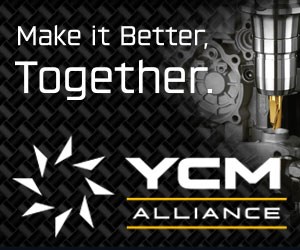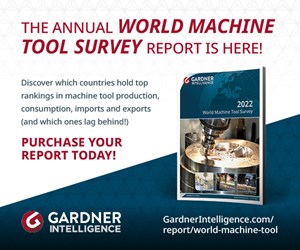Quick And Easy Tips To Enhance CNC Usage
Sometimes obvious improvement possibilities go unnoticed. It could be that you are too close to a problem (you can’t see the forest for the trees), or you may not be spending enough time out in the shop to spot them.
Share





Sometimes obvious improvement possibilities go unnoticed. It could be that you are too close to a problem (you can’t see the forest for the trees), or you may not be spending enough time out in the shop to spot them. Or, if you’re not communicating enough with your setup people and/or operators, they’re not going to be able to tell you when they’re having time-wasting problems.
For whatever reason, you may have room for improvements that aren’t being addressed. We’d like to offer some down-and-dirty suggestions to get your creative juices flowing again. Most of these suggestions are quite simple to implement, and they address common and obvious problems.
Color-code your pull studs. If you have machining centers made by two or more machine tool builders, even if they require the same tool holder shanks (CAT-40, for example), it is likely that each machine tool will require its own pull stud (a stud that allows the toolholder to be clamped in the spindle). Pull studs can vary dramatically from one machine tool builder to another. But sometimes the differences between pull studs are subtle and hard to spot. If the wrong pull stud is used, the results can be disastrous. At best, the tool will be insufficiently held in the spindle, resulting in vibration and chatter during machining. At worst, the tool might be thrown from the machine when the spindle is started. One easy fix is to use dye to color all of the pull studs for a given machine with a specific color. This way, setup people and operators will easily be able to tell if they’ve got the right pull stud(s) on the toolholders.
Use Velcro. Velcro makes a great way to keep needed components where they’re supposed to be. With turning centers, for example, you can Velcro the wrenches needed for changing inserts right to the turret, next to the turret station that requires them. You can Velcro the wrench that releases the bar feeder clamp into position next to the release bolt. For vertical machining centers, you can Velcro the vise clamp to the front of the machine. You get the idea. Velcro allows you to stick almost anything right where you need it to minimize searching time during CNC operation.
Get organized. Watch setup people and operators. It’s easy to tell just how organized they are. If they can quickly find each item they need, use it and then put it back where it belongs, they’re probably pretty organized. But if you see people searching the shop to find needed items and/or if you see them leaving items wherever they choose (or worse, if there’s no storage location for items), then there is room for improvement.
Get prepared. This goes hand-in-hand with getting organized. Appropriate preparation is the key to doing nearly anything in an efficient manner. When it comes to making setups, for example, just how prepared is the setup person? Is everything readily available, or does the person have to search the shop (while the machine is down) to find the components needed for the setup?
Document repeated tasks. I have often said the more often a task is repeated, the easier it is to justify improving it. The first thing you should do is ensure that the repeated task is appropriately documented. The more people involved with the task and the lower their skill level, the more important it is to provide adequate documentation for the task. Admittedly, the more a task is repeated, the more likely it is that a given person will eventually memorize how to perform the task. But the key word in the previous sentence is eventually. Until the task is memorized, the person performing it will struggle, which translates to taking more time to perform the task and possibly making mistakes when performing it.
Read Next
Setting Up the Building Blocks for a Digital Factory
Woodward Inc. spent over a year developing an API to connect machines to its digital factory. Caron Engineering’s MiConnect has cut most of this process while also granting the shop greater access to machine information.
Read MoreRegistration Now Open for the Precision Machining Technology Show (PMTS) 2025
The precision machining industry’s premier event returns to Cleveland, OH, April 1-3.
Read More5 Rules of Thumb for Buying CNC Machine Tools
Use these tips to carefully plan your machine tool purchases and to avoid regretting your decision later.
Read More
.jpg;width=70;height=70;mode=crop)
















.jpg;maxWidth=300;quality=90)









